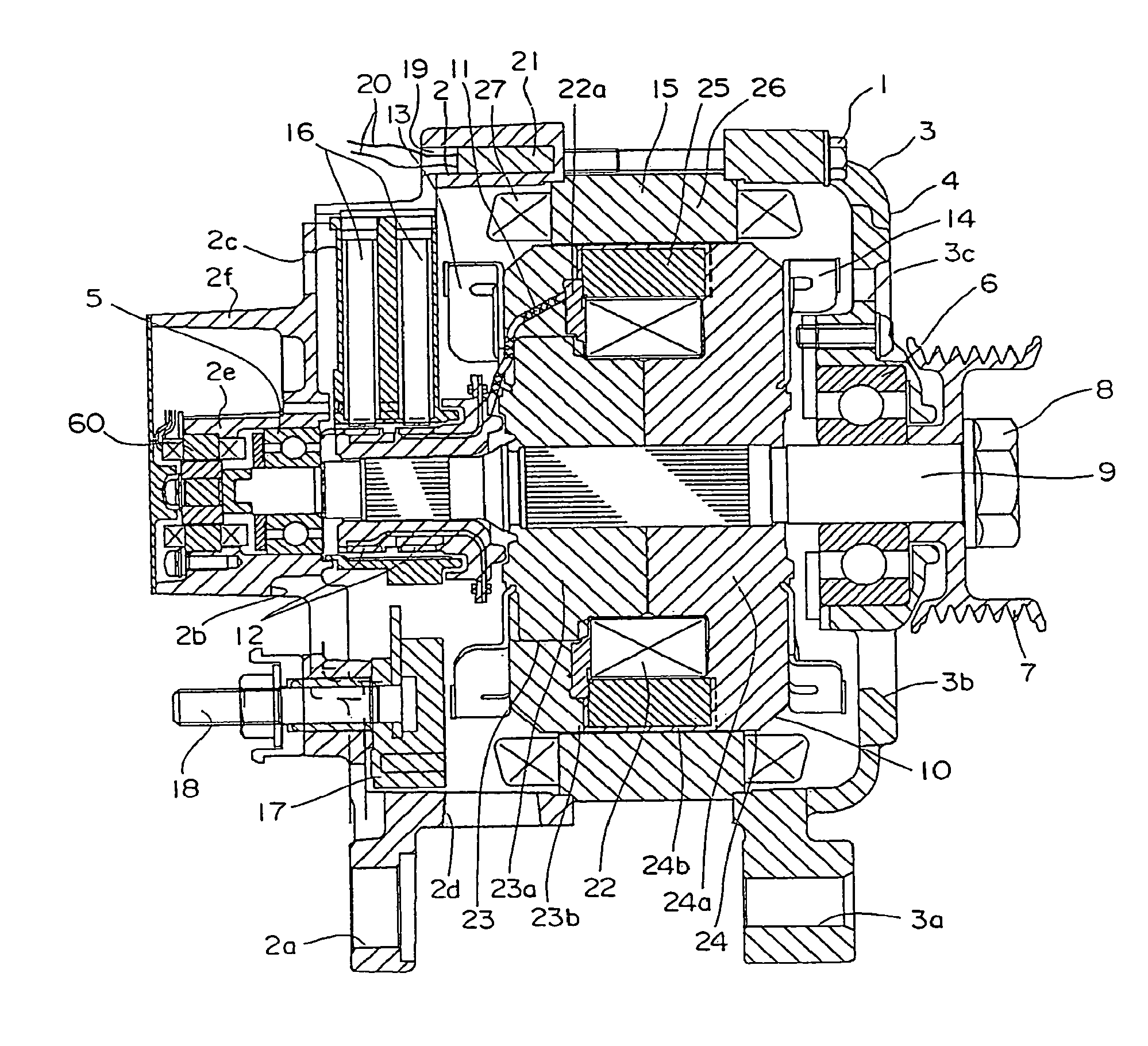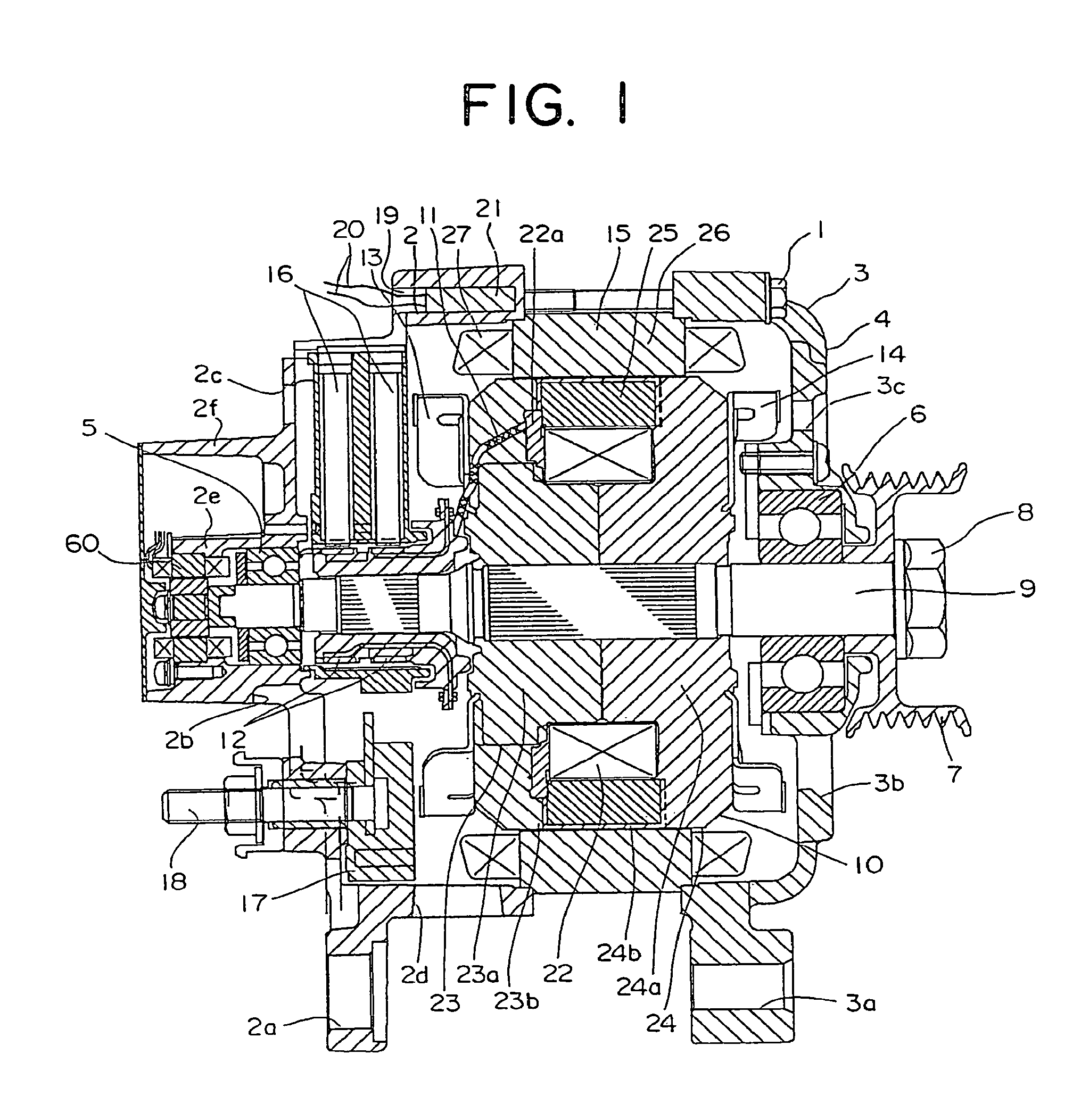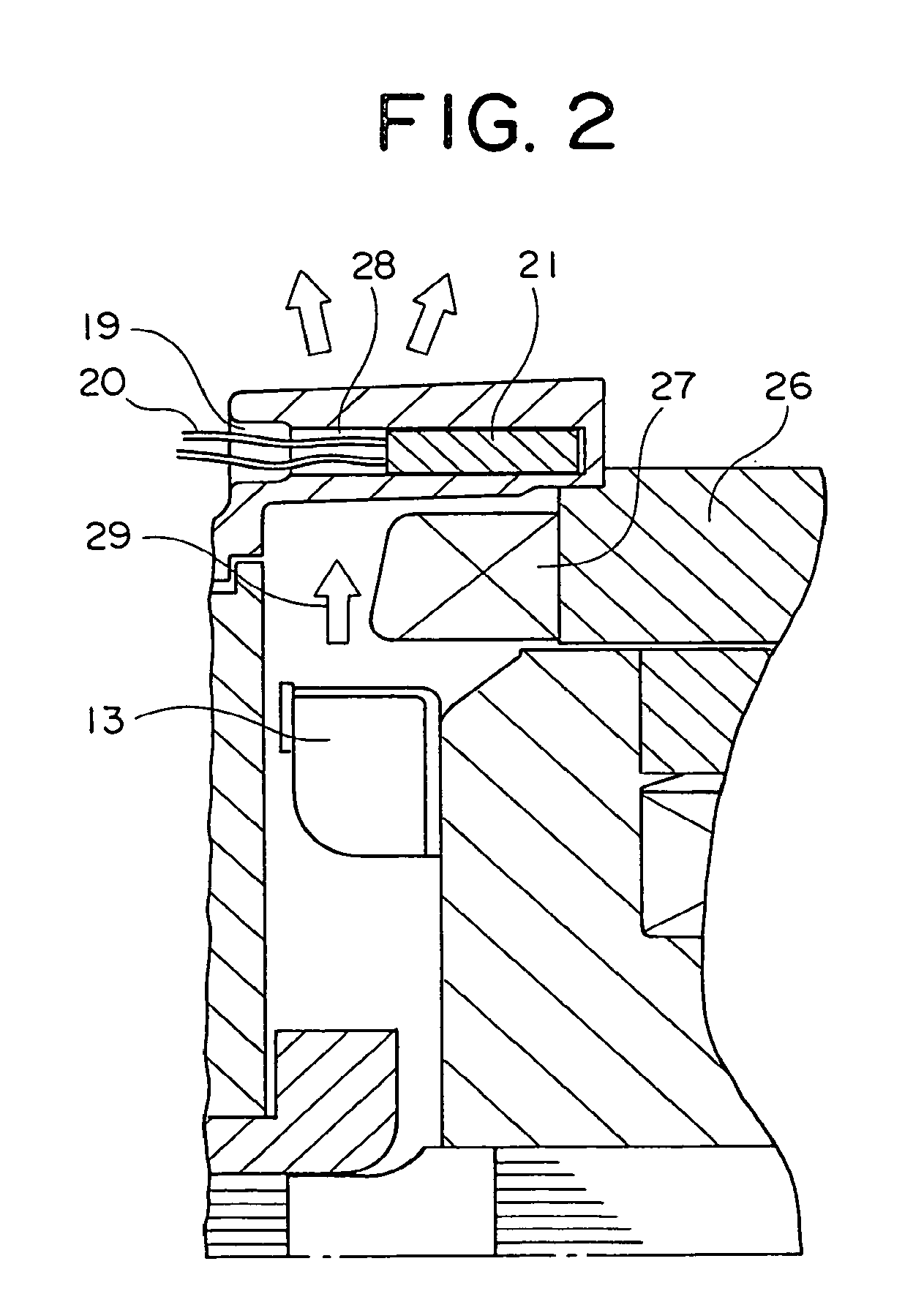Dynamoelectric machine
a dynamoelectric machine and dynamoelectric technology, applied in the direction of dynamoelectric components, electric motor control, cooling/ventilation arrangement, etc., can solve the problems of complex assembly process of such dynamoelectric machines, and achieve the effect of improving detection precision and assembly of dynamoelectric machines
- Summary
- Abstract
- Description
- Claims
- Application Information
AI Technical Summary
Benefits of technology
Problems solved by technology
Method used
Image
Examples
embodiment 1
[0016]Embodiment 1 of the present invention will now be explained based on the drawings. FIG. 1 is a cross section showing a configuration of an automotive dynamoelectric machine according to Embodiment 1 of the present invention, and FIG. 2 is a cross section showing a temperature sensor mount portion and part of a vicinity of a stator from FIG. 1.
[0017]As shown in FIG. 1, an automotive dynamoelectric machine includes: a case 4 constituted by rear and front brackets 2 and 3 constituted by members that do not generate heat integrated by a bolt 1; a rotating shaft 9 supported inside the case 4 by means of bearings 5 and 6, a pulley 7 being fixed to a first end portion of the rotating shaft 9 by a nut 8; a rotor 10 fixed to the rotating shaft 9; slip rings 12 fixed to a second end portion of the rotating shaft 9, the slip rings 12 supplying an electric current to the rotor 10 by means of electric wires 11; cooling fans 13 and 14 fixed to first and second end surfaces of the rotor 10; ...
embodiment 2
[0054]Configuration and operation of an automotive dynamoelectric machine according to Embodiment 2 of the present invention are similar to those of Embodiment 1, but a method for calculating a temperature difference ΔT between a stator winding temperature Ts and a temperature Th at a temperature sensor 21 is different.
[0055]Here, since an amount of heat Qa generated by a single phase portion of a stator winding is given by Qa=R×lac2, where R is resistance in the single phase portion of the stator winding, then temperature difference ΔT is determined by a second-order function of line current flowing into the stator winding 27, which is a major reason for temperature increases in the stator winding 27.
[0056]Specifically, Tsa=Th+ΔT, and if we let ΔT=α×lac2, where α is a constant, the stator winding temperature estimated value Tsa can be calculated from the temperature Th at the temperature sensor 21 using a second-order function of the effective line current value lac for the tempera...
embodiment 3
[0064]Configuration and operation of an automotive dynamoelectric machine according to Embodiment 3 of the present invention are similar to those of Embodiments 1 and 2, but the stator winding temperature estimated value Tsa is corrected by being averaged over time.
[0065]Specifically, Tsb=((Tsa)+K) / (N+1), Tsa=Th+ΔT, and if we let ΔT=α×lac2, where α is a constant, a corrected stator winding temperature estimated value Tsb can be calculated by calculating and correcting a stator winding temperature estimated value Tsa from the temperature Th at the temperature sensor 21.
[0066]Here, the temperature difference ΔT is a second-order function of the line current lac, K is a sum of Tsa for the preceding X seconds, and N is the number of stator winding temperature estimated values estimated by the temperature sensor 21 for the preceding X seconds (i.e., the number of the temperature measurement values at the temperature sensor 21 for the preceding X seconds).
[0067]FIG. 6 is a graph showing s...
PUM
 Login to View More
Login to View More Abstract
Description
Claims
Application Information
 Login to View More
Login to View More - R&D
- Intellectual Property
- Life Sciences
- Materials
- Tech Scout
- Unparalleled Data Quality
- Higher Quality Content
- 60% Fewer Hallucinations
Browse by: Latest US Patents, China's latest patents, Technical Efficacy Thesaurus, Application Domain, Technology Topic, Popular Technical Reports.
© 2025 PatSnap. All rights reserved.Legal|Privacy policy|Modern Slavery Act Transparency Statement|Sitemap|About US| Contact US: help@patsnap.com



